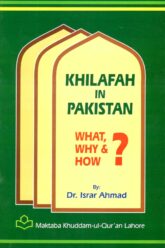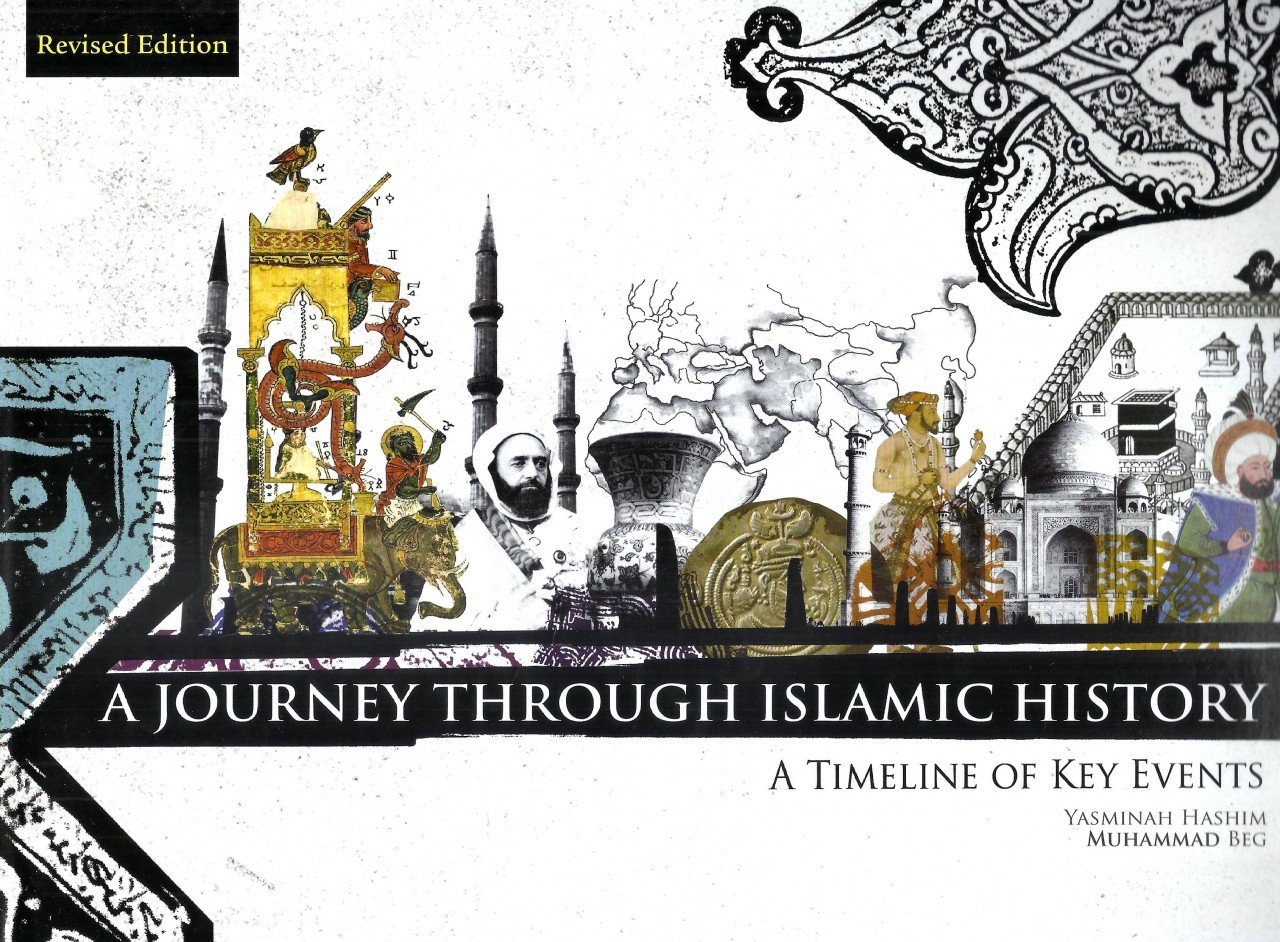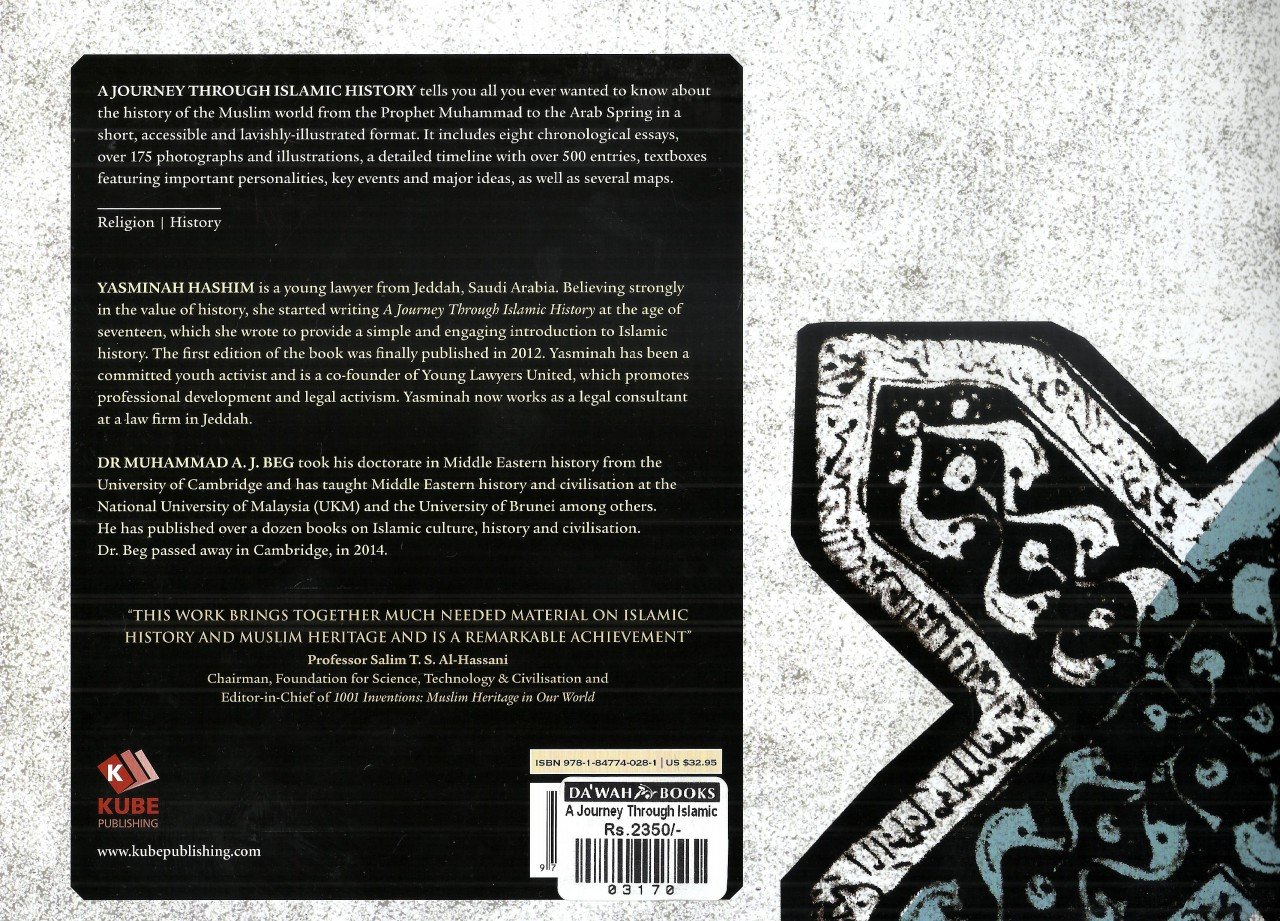Subtotal: 6,645 PKR
Islamic History & Revival
A Journey Through Islamic History: A Timeline Of Key Events
Item Code: 3170
Availability:
Out of stock
5,495 PKR
Out of stock
CompareAuthor: Yasminah Hashim Muhammad Beg
Publisher: Kube Publishing
Pages: 184
Binding: Softcover
ISBN: 978-1-84774-028-1
About the Book: A Journey through Islamic History tells you all you ever wanted to know about the history of the Muslim world from the Prophet Muhammad to Malcolm X in a short, accessible and lavishly-illustrated format. Includes Seven chronological essays covering 1500 years of history. With over 175 pictures, illustrations and maps.

 Khilafa In Pakistan
Khilafa In Pakistan  History of Makkah
History of Makkah  Civilization Of Faith
Civilization Of Faith  History of Islam: Uthman Ibn Affan
History of Islam: Uthman Ibn Affan 








Anonymous –
This colourful book chronicles fourteen hundred years of Muslim history and civilization in linear timelines, supported by maps, charts, photographs,
and lavish illustration. Initiated by a personal desire to see the big picture in a nutshell and graphically encompass the incessant flow of time—that is
history—in a manner that attaches individual lives to the greater collective, the book took shape through a collaborative effort of the Saudi lawyer Yasminah
Hashim, who started to make out these timelines at the age of seventeen, and UK based historian Muhammad A. J. Beg, who passed away in 2014 in Cambridge. A Journey through Islamic History: A timeline of Key Events begins with the birth of the Prophet and ends with the mention of certain events of 2015.
Within this sweeping timeframe, there are varying degrees of depth; coverage is scanty in certain cases, more elaborate in others, but since the narrative is
kept to a bare minimum, the value of the book is in its timelines and charts. The book overviews, in chronological order, the time of the Prophet, upon him blessings and peace, the Rightly-Guided Caliphs, the Umayyads, ‘Abbasids, Mamluks, Ottomans, Safavids, Mughals, the rise of European power, and modern Muslim nation-States.
First published in 2012 with 164 pages, this revised edition has 184 pages.
With over 175 photographs and illustrations, approximately 500 entries in its timeline, and text boxes highlighting personalities, events, and ideas, A Journey
Through Islamic History: A Timeline of Key Events is for lay readers interested in a picture book on Muslim history. It should, however, not be taken as a primary
or even secondary source of reliable information, for this is not a scholarly text rooted in sources. The picture credits on the last page acknowledge copyright
of some of the photographs along with an offer from the publishers “to rectify any omissions in future editions following notification from the copyright
holders”(p. 184), but it is somewhat disturbing to discover inaccurate or absent credits and that none of the 16 maps in the book cites their source.
Anonymous –